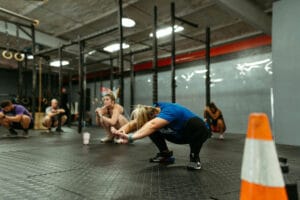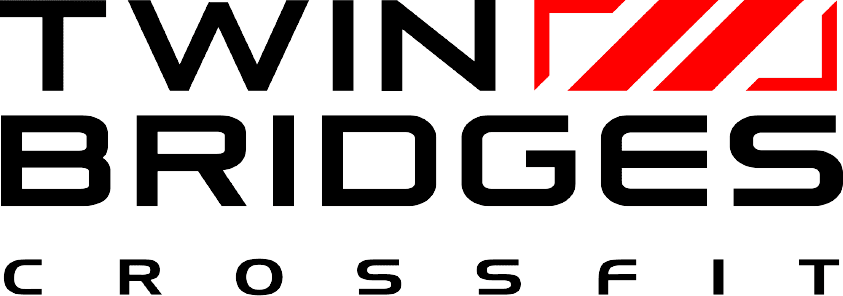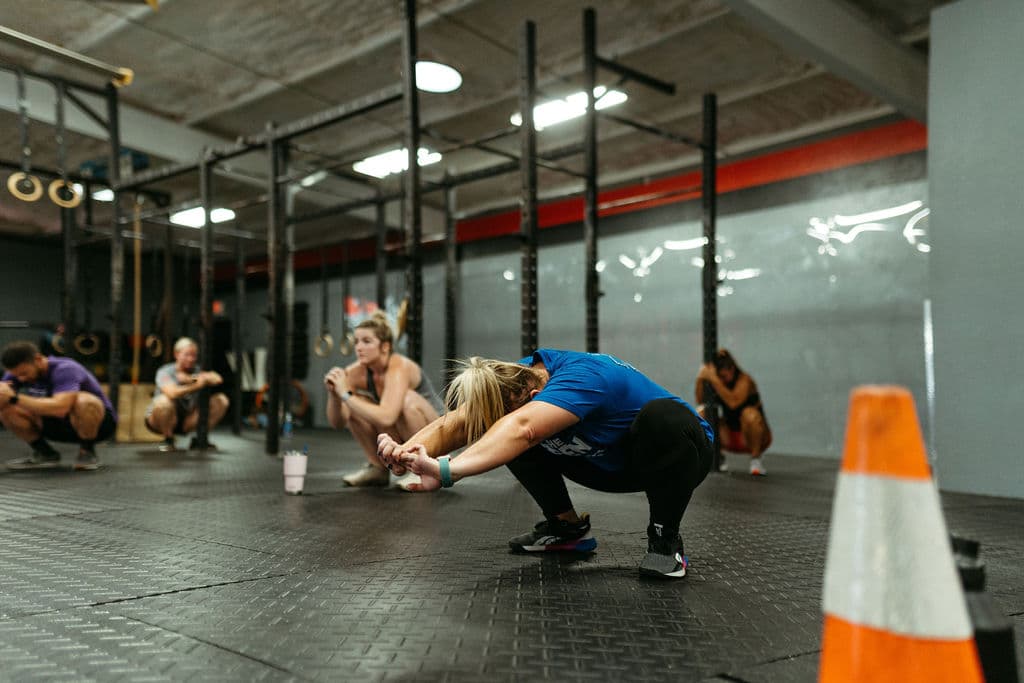Every September at TBCF we celebrate “Squatember”–for the entire month classes finish with a five-minute squat hold. I periodically get asked why we do this. Why is it so important that we be able to hold a comfortable bodyweight squat?
I sat down to write a post answering this really important question and discovered that nearly 20 years ago, Coach Glassman wrote more eloquently on the importance of the squat than I ever could. I’m going to paraphrase him below, but first I’ll sum up in my own words why we do the squat challenge.

The squat is the primary foundational movement of CrossFit and by extension it is the most important movement pattern of all human functionality. In short, if you can’t hold a comfortable, mechanically sound end range of motion squat for at least a few minutes, your body isn’t functioning as well as it should.
I’ll answer the question “why do we need to practice holding a squat” from two perspectives–for now, and for later.
For now: do you want to increase the weight you’re able to put on the barbell on squat day? Do you want to squat cleans and squat snatches to feel better? Do you want to row more fluidly, do wall balls with better rhythm, and knock out your thrusters more easily?
For later: do you want to be able to get up off the toilet without using grab handles? Do you want to be able to pick your kids or grandkids up? Do you want to have confidence that you’ll be able to get yourself up off the floor if you ever have an accident and fall down?
If you answered yes to any of those questions, the solution is the same: you need to get comfortable spending time in a squat.
Our mission statement at TBCF says in part “we don’t ever want a lack of fitness to keep you from doing things that are important to you.” If you aren’t comfortable in the bottom position of a squat, you aren’t as fit as you could be, and at some point down the road that deficiency will keep you from doing things that are important to you.
And now, Coach Glassman…
The squat is essential to your well-being. The squat can both greatly improve your athleticism and keep your hips, back, and knees sound and functioning in your senior years.
Not only is the squat not detrimental to the knees it is remarkably rehabilitative of cranky, damaged, or delicate knees. In fact, if you do not squat, your knees are not healthy regardless of how free of pain or discomfort you are. This is equally true of the hips and back.
The squat is no more an invention of a coach or trainer than is the hiccup or sneeze. It is a vital, natural, functional, component of your being.
The squat, in the bottom position, is nature’s intended sitting posture (chairs are not part of your biological make-up), and the rise from the bottom to the stand is the biomechanically sound method by which we stand-up. There is nothing contrived or artificial about this movement.
Most of the world’s inhabitants sit not on chairs but in a squat. Meals, ceremonies, conversation, gatherings, and defecation are all performed bereft of chairs or seats. Only in the industrialized world do we find the need for chairs, couches, benches and stools. This comes at a loss of functionality that contributes immensely to decrepitude.
On the athletic front, the squat is the quintessential hip extension exercise, and hip extension is the foundation of all good human movement. Powerful, controlled hip extension is necessary and nearly sufficient for elite athleticism. “Necessary” in that without powerful, controlled hip extension you are not functioning anywhere near your potential. “Sufficient” in the sense that everyone we’ve met with the capacity to explosively open the hip could also run, jump, throw, and punch with impressive force.**
**If you want to read the entirety of Coach Glassman’s article, it can be found here:
http://library.crossfit.com/free/pdf/CFJ_SquatClinic_Dec02.pdf
About the Author
Edward Getterman is a Certified CrossFit Trainer (CF-L3) and the owner of Twin Bridges CrossFit in Waco, Texas. If he can’t be at the gym or at home, he’d prefer to be at Walt Disney World. He loves deadlifts, hates running, and believes above all else that CrossFit is for everyone.

